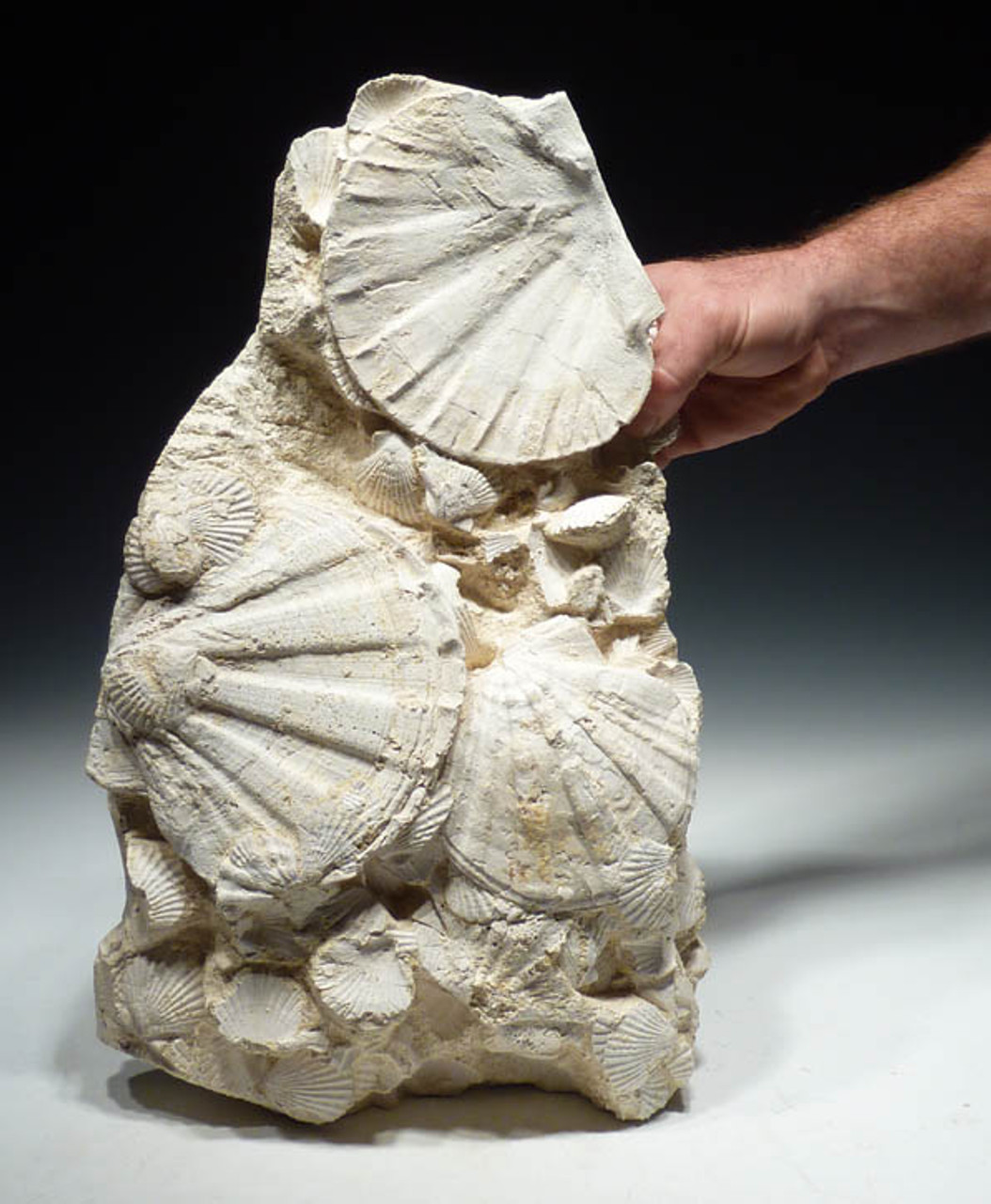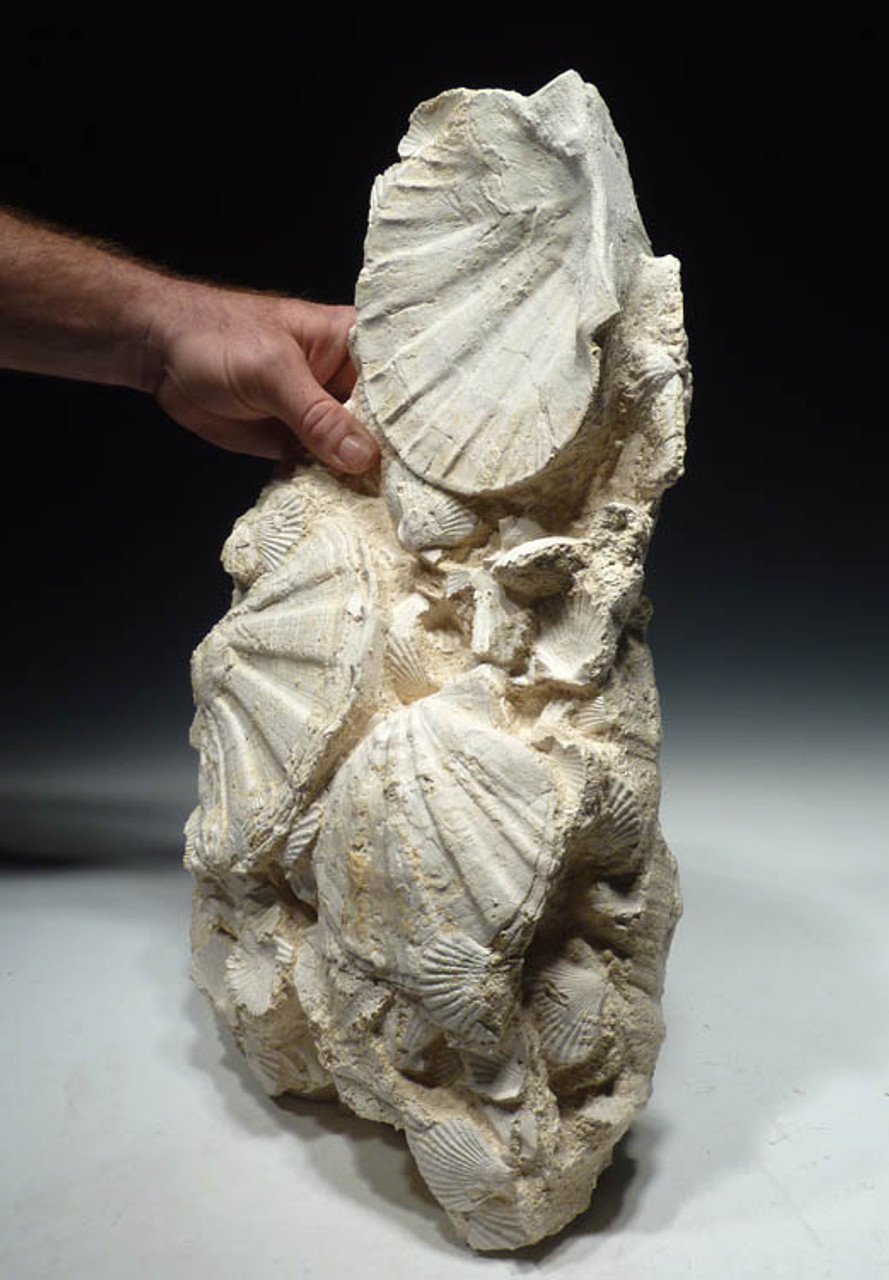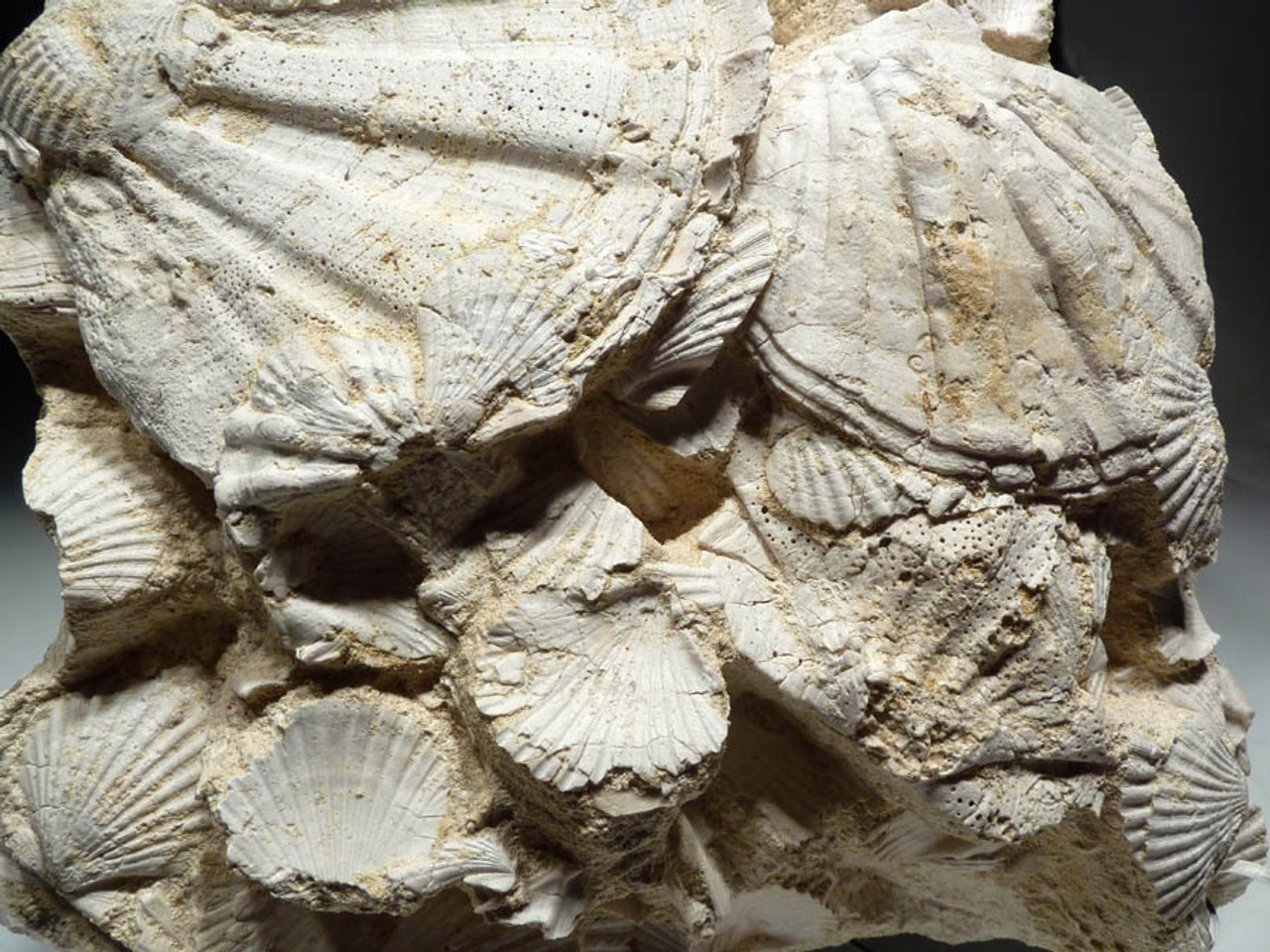Product Description
ITEM #
|
BIV017
|
||
ID
|
Pecten sp.
|
||
FOUND
|
France
|
||
AGE
|
UPPER MIOCENE: 11.6 - 5.3 million years ago
|
||
SIZE
|
17" high x 10" wide, largest shell is 6" across
|
||
CONDITION
|
MINOR REPAIR BUT NO FABRICATION
|
||
NOTE
|
INTRIGUING DECORATOR FOSSIL OF A
|
||
INCLUDES STAND - Actual Item - One Only
Comes with a certificate of authenticity / information sheet |
|||
This is a fascinating interior design fossil specimen, impressive in any interior setting as an architectural design accent. These giant prehistoric sea scallops (pecten sp.) are shown in their natural position as they died millions of years ago. Accompanying them are dozens of baby scallops. The surrounding host rock has been painstakingly removed to reveal an extremely dramatic three-dimensional fossil cluster of stunningly well-preserved giant sea scallops. The position of all the shells is 100% natural as it was buried nearly 5 to 10 million years ago. This was a time on the Earth when the ocean was home to massive prehistoric sharks such as the enormous Megalodon shark which grew to a size larger than a touring bus. The photos cannot convey the true visual impact this piece makes. Some of the shells are projecting way out from the front surface. To see this magnificent specimen in person is a real treat. This is one of the most attractive interior design specimens and because it is so 3D in appearance, it can be appreciated from a multitude of angles in a room. 100% NATURAL WITH NO RESTORATION.
The Pecten, or scallop, is a member of the bivalve group which are mollusks made up of two half shells. The valves are attached by a hinge ligament and articulate open and close by two muscles attached on the inside of the shells. Bivalves are filter-feeders and pump water inside their bodies to strain out phytoplankton and other small organisms for food. Bivalves generally have limited locomotion and possess a foot but mainly live attached to some type of substrate or burrow in the underwater sand. Scallops prefer clean, sandy bottoms in shallow water. They rest on the ocean floor and have a bizarre ability to swim by rapidly opening and closing their shells fluttering themselves through the water.
 US DOLLAR
US DOLLAR
 EURO
EURO
 AUSTRALIAN DOLLAR
AUSTRALIAN DOLLAR
 CANADIAN DOLLAR
CANADIAN DOLLAR
 POUND STERLING
POUND STERLING












